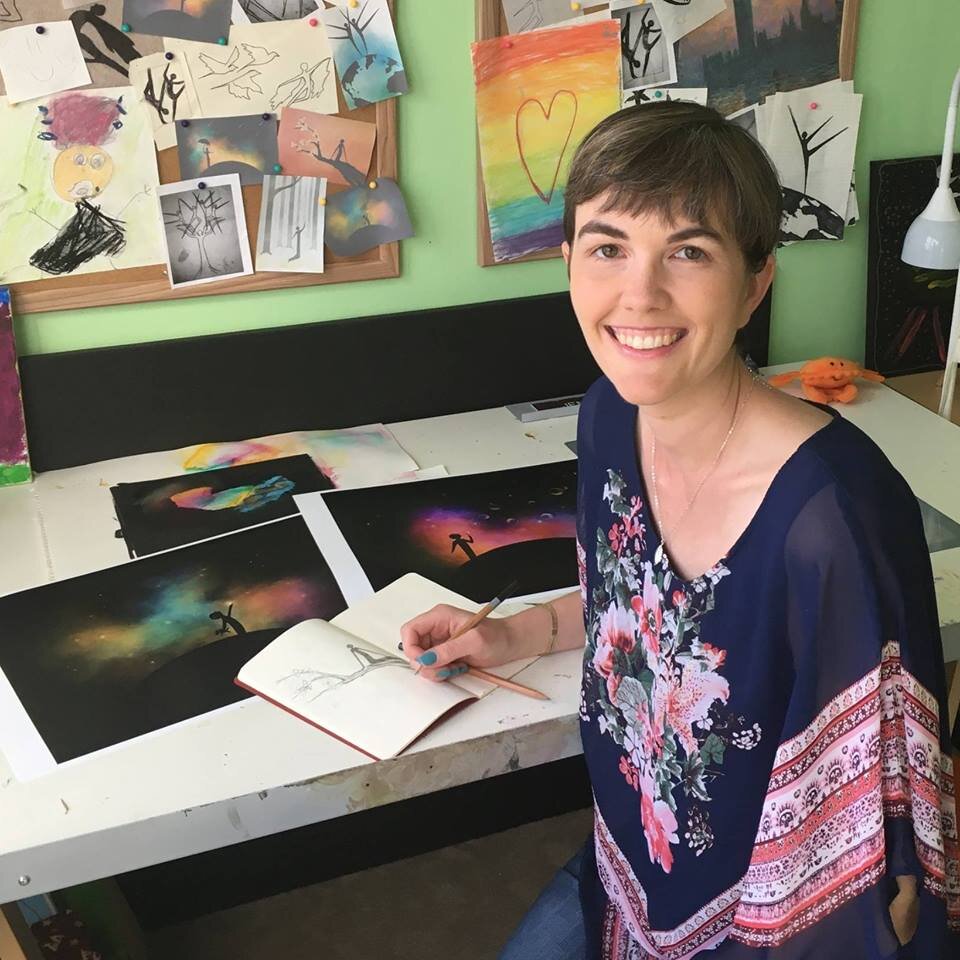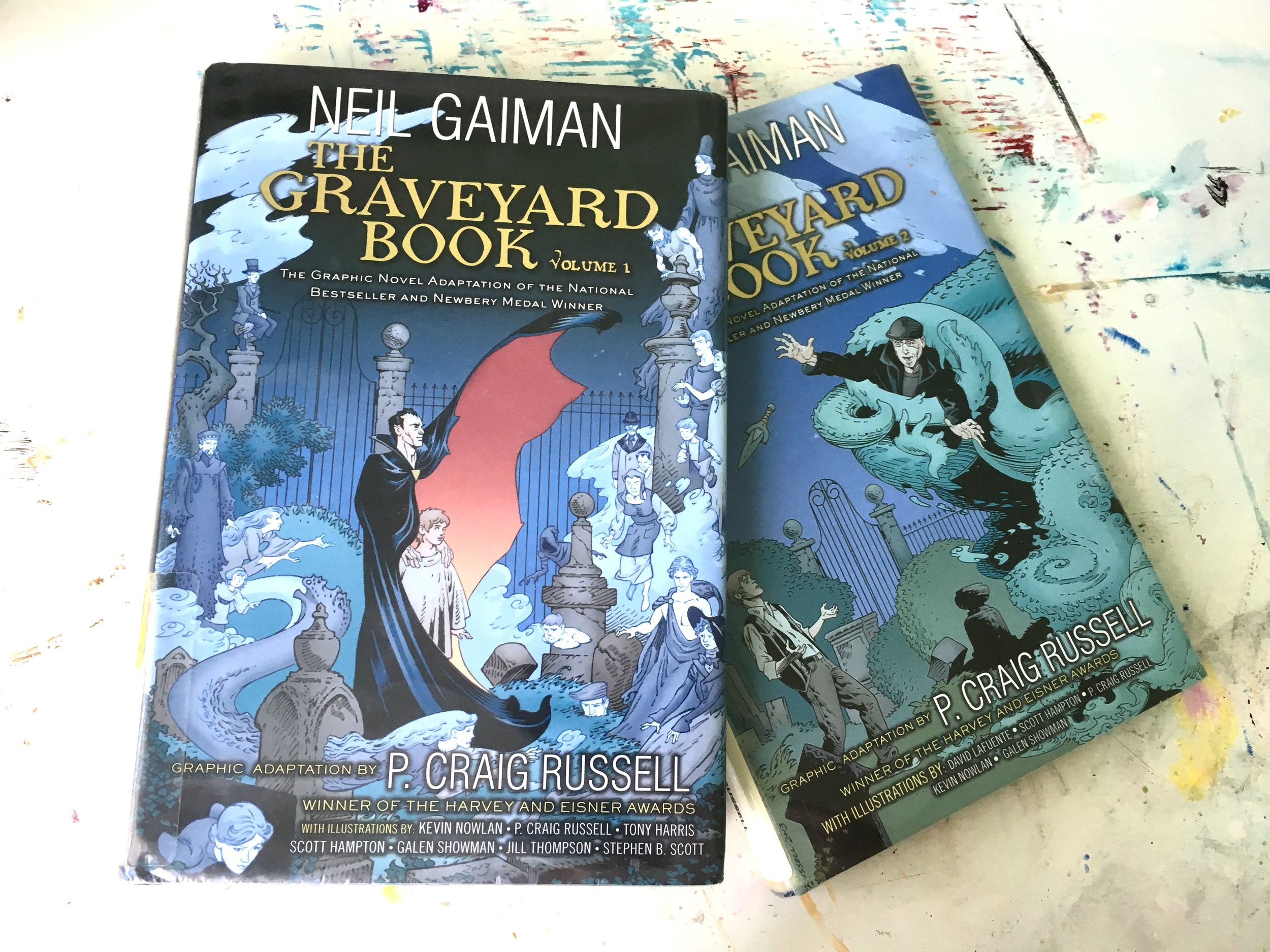Comics and Graphic Novels: Alternative Storytelling
My husband loves to read graphic novels. These days, he almost exclusively chooses books from the graphic novel section of the library. I’ll admit, I’ve never really gotten into the medium. I used to love reading Garfield comic strips as a kid, but as I got older, I never quite managed to follow an entire story that mixed words with pictures. I think it has something to do with the way my brain processes words and images. It’s two different parts of my brain and they don’t work in sync. They fight with one another for my attention. Though I find graphic novels visually appealing, I have a harder time following the story than if I’m simply reading text.
Given that I don’t know all that much about graphic storytelling, I figured that I’d take an introductory dive into the subject. There are so many different ways to tell a story. We’ve already discussed a few of those ways. Most often we get our stories through the written word or words brought dramatically to life via television or movies. Graphic novels bring us our stories in a unique way, by combining the written word with two-dimensional images.
I decided to approach this topic by gaining some knowledge first. I read Understanding Comics, by Scott McCloud, at the recommendation of my husband, graphic novel enthusiast and niche-market comic illustrator. It was a fascinating read. The book touches on the history and definition of the comic, why we respond to cartoon images, and the universal nature of some of these images. It looks at how comics can show the passage of time or emphasize an important detail or event. It covers a lot of ground in an engaging comic format. If you’re interested in learning more about comics, or want to write/illustrate your own comics, I’d definitely recommend this read.
After I read the book, I wanted to know a little bit more about why my husband chooses graphic novels over traditional novels and non-fiction books. He will read even the longest graphic novels, but he never gets very far when he picks up a book without pictures. Why is that? He told me that without the images to ground him, his mind wanders…and not necessarily off-topic. In fact, the more interesting the book or thought-provoking the topic, the more his mind drifts, thinking over what he’s reading, forming his own pictures in his mind. As a result, he reads quite slowly, caught up in his thoughts. When he reads a graphic novel, the pictures put his thoughts into context. The translation of words to pictures that naturally occurs in his mind is already done for him, increasing the speed and depth of his reading.
Fascinating. This is so different from the way my own mind works.
My husband has found that graphic novels are particularly suited to memoirs. The pictures bring you along on a journey into someone’s life, taking you right into the time period without the guesswork that might come from imagining a time and place you’ve never seen. Description, even the best description, can’t necessarily make a life feel as real.
A picture is worth a thousand words, as the saying goes.
Graphic novels are also great at conveying feelings and introspective moments, those moments when no one is speaking, when even getting into the head of a character is less clear than the expression on their face. Words can distract from this raw emotion and a good artist can tap into that.
Illustrations, even without words, will often lead to discussion and a deeper understanding of a topic. And if you ask my husband, we all need a break from reading from time to time.
Me? I’ll read a book any day of the week. But, armed with some basic graphic novel knowledge, I began reading some graphic novels myself. I started with Pashmina, by Nidhi Chanani. This one is a juvenile graphic novel, just the right level for my daughter. I enjoyed the narrative and found the use of color stunning, as the story moved back and forth between reality and mystical memories. As it was written for children, I found it easier to connect the words and the pictures. My tendency is to gloss over the pictures in favor of the words, but I managed to absorb both.
I tried an adult graphic novel, Thoreau, by A. Dan and Maximilien LeRoy. The visuals really brought Thoreau’s life alive for me. I almost wish there had been no words, as I found the visuals so engaging. Of course, I wouldn’t have had a clue what was going on. Even with the words, I think that if I had known a bit more about Thoreau’s life before reading the graphic novel, I would have appreciated it more.
Next, I took a look at a couple of Neil Gaiman works, which gave me the perfect opportunity to compare storytelling mediums, as the graphic novels were adapted from his original novels. How do they compare and which would I prefer?
I started with The Graveyard Book. The graphic novel adaptation that I read was split into two volumes and had numerous illustrators. In all honesty, I didn’t finish it. I found the jump from illustrator to illustrator jarring. As much as I enjoyed The Graveyard Book when I read it in novel form, I found that the words and pictures fought against each other in my mind. For this one, I much preferred to form my own images than have them drawn out for me.
For me, Coraline worked much better as a graphic novel. Though the novel is well-written, many of the original words are retained in the graphic novel, so not much is lost. The pictures really add something to the story. They amp up the creepy factor, which I think is a plus for a story like this one. Some of the pictures easily take the place of descriptive paragraphs and there are numerous instances where the pictures alone tell the story. This made my brain work a little less hard, but I do love the way Neil Gaiman uses words, so I’m a bit torn. Interestingly, the movie version (yet another great way to tell a story) made the story much less creepy and little too cute. These kinds of comparisons are always interesting.
So, what’s the point? What did I learn by dipping a toe into the deep pool of the graphic novel? While they may not always be my preferred method of receiving a story, they work really well for visual thinkers and they tell stories in a unique way. They allow us to really see the story, immerse ourselves in it. Graphic novels and comics allow us to take a different approach, to not have to choose between art and writing. What a great way to get a reluctant writer to share the stories that they have inside. What a great way to see the world as someone else does, without the need for lengthy descriptive passages.
Why don’t we give it a try? Perhaps, this method of storytelling is the one you’ve been waiting for.
Gently Guided Activity #1 Before you begin creating cartoons or graphic novels of your own, take some time to familiarize yourself with the genre, if you aren’t already. I’d suggest heading to the library and checking out their selection of graphic novels. You’ll find great titles for all ages and interests. We’ve got one out now that is all about cooking! Flip through a few. Take note of the pictures, the use (or non-use) of color, the way time or emotion is represented. Use these as examples to help you get started with your own attempts.
Gently Guided Activity #2 Why not try turning yourself into a comic character? If you take a look at the first image that I posted from inside Understanding Comics by Scott McCloud, you’ll see a spectrum of comic faces, ranging from extremely detailed to more cartoon-like. You can choose to make yourself into any kind of comic character you’d like. Feel free to embellish, adding a little fantasy to the mix. Do you want your cartoon self to be just like you or would you prefer to have special powers or talents? Think about what you’d like to do before you get started. Once you have an idea, draw out your new cartoon self!
Gently Guided Activity #3 Once you’ve created a cartoon version of yourself, try coming up with a short story that involves your new character. Can you put your new character into a graphic novel or comic setting? Try using one of the following templates to draw a story in graphic format. If you don’t feel like using the cartoon version of yourself that you created above, feel free to come up with a completely new story and characters. Stick figures are OK! Draw whatever story comes to mind. If you’re too intimidated to write and draw your story, feel free to create a visual story without any words or a written story without any images…for now.
Gently Guided Activity #4 Graphic novels move in interesting ways through time. We can use different visuals to express the passage of time. Create a multi-panel comic. The first panel should take place in the past. The last panel should take place in the future. Use the middle few panels (however many you want) to show how we got from the beginning to the end. Play around with different ways of representing time. It doesn’t always have to be linear.
Use the templates that I’ve provided above or create your own with any variety of shapes and sizes to work with. Try your hand at telling a story by mixing your words and your images. If you really hate drawing, you can try using images that you photograph instead. Whatever approach you take, have some fun experimenting with this form of storytelling.
We are all storytellers. We just have to find the format that moves us.










